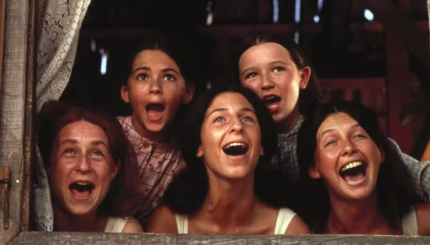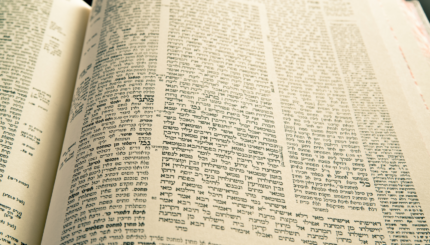The diversity of the Bible‘s depictions of women begins in its opening chapters. In Genesis, the creation of humanity is described in two different narratives. In the first, man and woman are created together from the dust of the earth. In the second, Adam is created first, and Eve is a secondary creation, molded from Adam’s rib in order to provide him with companionship.
In biblical law, women were subordinate to either father or husband. Though, as a general rule, women did not have property rights, a woman with no brothers could inherit her father’s land–a rule established after the daughters of Zelophehad successfully petitioned Moses (Numbers 27).
Attitudes toward women changed over the biblical period. According to Carol Meyers, women and their traditional roles were valued less once the monarchy was established, religious life was shifted to the Temple cult, and Israelite society was no longer centered on agriculture and the home.
Nonetheless, the Bible depicts many strong female characters. The prophet Deborah was the foremost religious leader of her time, and figures such as Hannah, Ruth, and Esther play pivotal roles in the biblical narrative.

Help us keep Jewish knowledge accessible to millions of people around the world.
Your donation to My Jewish Learning fuels endless journeys of Jewish discovery. With your help, My Jewish Learning can continue to provide nonstop opportunities for learning, connection and growth.
Rabbinic literature contains more explicit opinions about women. It is said that women are greedy, lazy, and jealous, but also more compassionate and more naturally intelligent than men. Women are associated with witchcraft, and said to be foolish and dishonest, but a man without a wife is said to be without joy and blessing. The ancient rabbis taught that a woman’s body and voice were indecent, but also that a man should respect his wife more than himself.
In rabbinic law, women have fewer religious responsibilities than men. As a general rule, they are exempt from positive time-bound commandments, such as fixed prayer at particular times of the day. According to scholar Judith Hauptman, this ruling also reflects female subordination. If a woman were compelled to fulfill time-bound commandments, this, “would lessen her husband’s dominance over her because she would have to cease temporarily from serving him, and instead serve God.”
Attitudes toward women in the Middle Ages built on rabbinic models, but also reflected the general cultural milieu of individual Jewish communities. In sources originating in Muslim lands, we often find more restrictive attitudes toward women. According to Maimonides, “There is nothing more beautiful for a wife than sitting in the corner of her house.” In addition, Maimonides allowed a husband to beat his wife if she consistently refused to fulfill wifely duties such as washing his hands and feet.
An example of the discrepancy between attitudes in Muslim and Christian lands can be seen in the response of Maimonides’ critic Abraham ben David of Posquieres, a French authority, who noted that he had, “never heard that it is permitted to raise a rod against a woman.”
In the medieval mystics’ theology of sefirot, some of God’s ten attributes are female. The sefirah known as Malkhut or Shekhinah is the primary female manifestation of God, and to a certain extent the existence of such a manifestation made femaleness praiseworthy. Still, the female attributes of God were considered secondary, subservient, and passive, receiving power from the primary male attributes.
As for “real” women, the mystics generally believed that their primary purpose was the facilitation of men’s religious life. Thus a fascinating passage in the Zohar, the most important medieval mystical work, relates that the halls of the afterlife are presided over by women who gave birth to or aided great men.
In the past 30 years, scores of teshuvot, or responsa (written rabbinic answers to specific legal questions) have been written about women’s issues. The liberal denominations have addressed women’s leadership of public prayer and the entrance of women into the rabbinate and cantorate, while Orthodox responsa have covered issues such as women’s prayer groups and women’s recitation of the mourner’s kaddish. Many of these Orthodox responsa address not only the legality of such innovations, but also the social ramifications of change. One of the concerns reflected is that innovating tradition–even when it is permissible under Jewish law–could position the community on a “slippery slope,” leading to practices which do conflict with Jewish law.



